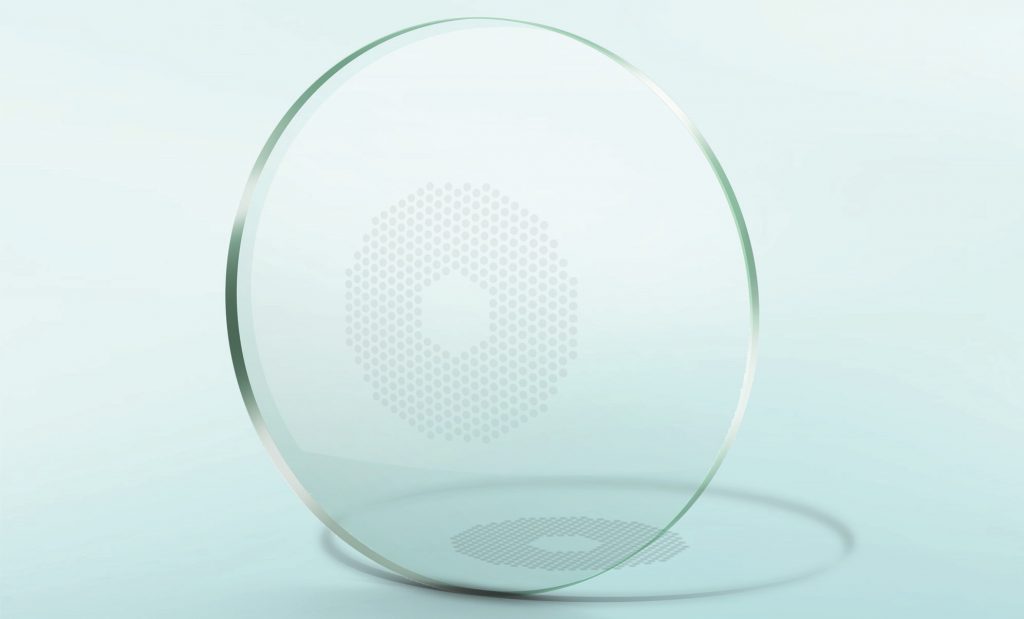 |
| DIMS may reduce eye fatigue in both children and adults, study shows. Photo: Hoya Vision Care. Click image to enlarge. |
With the prevalence of myopia steadily increasing around the world, interventions such as multifocal contact lenses and atropine use are entering mainstream practice. A spectacle option called defocus-incorporated multiple segment (DIMS) correcting lenses has also been developed as an early intervention tool for axial length-related myopia. In a recent small study, researchers investigated eye fatigue levels with DIMS in adolescents and adults and found reduced eye fatigue across both age groups.
The study took place in Korea and included 20 myopic adults (mean age of 24.9, 50% females) and 22 myopic adolescents (mean age of 14.6, 55% females) recruited from a university and two middle schools, respectively. Among adults and adolescents, myopia ranges were similar, with adults demonstrating a right eye spherical equivalent (SE) of -3.D and a left eye SE of -3.21D and adolescents with a right eye SE of -3.69D and a left eye SE of -3.57D. The researchers used commercially available single vision (SV) and DIMS lenses (Hoya Vision Care).
“Unlike general SV lenses, the DIMS lens has a corrected clear view only in a 9.4mm limited optical zone in the middle of the glasses, which is surrounded by a 33mm defocus area containing a honeycomb pattern of +3.50D reading spheres,” the researchers explained. “The different optical zones result in a blurred region subtending roughly 60˚x57˚ visual angle (horizontal x vertical) that excludes a central 13˚ non-blurred region.”
The task required of the study participants was a “Where’s Waldo?” (known as “Where is Wally?” in Korea) puzzle created by British author Martin Hanford in 1987. A sample of 24 pictures were obtained from the Korean version of the book. “In order to make the search task better to analyze, we subdivided each of the images into a regular 7x7 grid indexed by letters (a to g) and numbers (one to seven),” the researchers wrote. “The 7x7 grid was overlaid on the stimulus images and shown during all experiments. The task for participants was to view the image and indicate which of the target grid squares contained Wally.” They categorized images into easy or difficult levels by the number of distinct human characters per grid square.
Here are some of their findings:
Adults had an average 10% higher accuracy than adolescents.
Adults’ average response time was also slightly faster. “Response time showed a main effect on difficulty, with easy images (mean 69.88 seconds) being on average around 18 seconds faster to solve than difficult images (mean 88.31 seconds),” the researchers noted. DIMS lenses didn’t result in any adverse effects on accuracy or response time.
Eye fatigue was affected by lens type and difficulty but not by age, with more fatigue in the case of difficult images. “DIMS lenses significantly reduced eye fatigue on average by 23%,” the researchers said. In adolescents, subjective eye fatigue was decreased by 26% and in adults, by 18%.
The researchers proposed two explanations for the observed reduction in eye fatigue—one related to changes in accommodation from the additional optical power of the lens and one related to a change in visual and attentional processing brought on by the DIMS optical setup. For the former, the researchers cite accommodative microfluctuations during the accommodative process that results in eye strain. These small dioptric changes that occur during screen reading, for example, stress the ciliary muscles. The DIMS lens design may diminish such strain. “Given the multifocal setup of the DIMS lenses, the added power in the peripheral zones, which leads to a desired main effect of retardation of elongational axial length, at the same time may be able to reduce the accommodative muscle stress, resulting in an age-independent reduction in eye fatigue,” the researchers said.
The other possible explanation is that subjects’ processing may be affected by the DIMS optical setup, which features some peripheral blurring. “Given that information beyond the central 13° is blurred to some degree, the amount of information that needs to be processed (peripherally) is reduced compared with SV lenses,” the researchers noted. “In this context, it would be interesting to test attentional processes more explicitly with DIMS and SV lenses.”
“To our knowledge, this is the first study to investigate the effects of DIMS lenses on eye strain via a demanding search task,” they added. “We found robust decreases of eye strain for these corrective lenses, which were observed for both a younger and an older participant group, albeit at a lower level for the latter group.” They encourage further research involving more tasks and studies investigating potential changes in neural processing accompanying eye strain reductions.
Ryu H, Ju U, Wallraven C. Myopia-correcting lenses decrease eye fatigue in a visual search task for both adolescents and adults. PLoS One. October 13, 2021. [Epub ahead of print]. |

